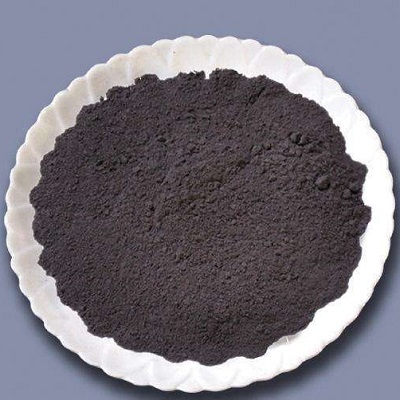Bleisulfid Chemische Eigenschaften,Einsatz,Produktion Methoden
R-Sätze Betriebsanweisung:
R61:Kann das Kind im Mutterleib schädigen.
R20/22:Gesundheitsschädlich beim Einatmen und Verschlucken.
R33:Gefahr kumulativer Wirkungen.
R50/53:Sehr giftig für Wasserorganismen, kann in Gewässern längerfristig schädliche Wirkungen haben.
R62:Kann möglicherweise die Fortpflanzungsfähigkeit beeinträchtigen.
S-Sätze Betriebsanweisung:
S53:Exposition vermeiden - vor Gebrauch besondere Anweisungen einholen.
S45:Bei Unfall oder Unwohlsein sofort Arzt zuziehen (wenn möglich, dieses Etikett vorzeigen).
S60:Dieses Produkt und sein Behälter sind als gefährlicher Abfall zu entsorgen.
S61:Freisetzung in die Umwelt vermeiden. Besondere Anweisungen einholen/Sicherheitsdatenblatt zu Rate ziehen.
Chemische Eigenschaften
Lead(II) sulfide is a silvery to black crystalline powder.

Lead(II) sulfide can be precipitated from a solution of lead (II) salt and hydrogen sulfide.
Lead (II) sulfide has been used during many years as source of lead (Pb). The main method to obtain the lead is the smelting of PbS and then, the lead (II) oxide obtained is reduced to Pb and carbon monoxide:
2 PbS + 3 O2 → 2 PbO + 2 SO2
PbO + C → Pb + CO
Moreover, lead (II) sulfide is used as semiconductor and photoconductor due its chemical proprieties. It is also used as black pigment. In recent years, it has been used in to obtain nanoparticles to use in electronic or electric devices.
Verwenden
Lead(II) sulfide is used as a semiconductor. Used in electronic devices and Infrared sensor.
Definition
galena: A mineral form of lead(II)sulphide, PbS, crystallizing in thecubic system; the chief ore of lead. Itusually occurs as grey metallic cubes,frequently in association with silver,arsenic, copper, zinc, and antimony.Important deposits occur in Australia(at Broken Hill), Germany, the USA(especially in Missouri, Kansas, andOklahoma), and the UK.
Reaktivität anzeigen
The reaction between iodine monochloride and any of the following is vigorous: cadmium sulfide, LEAD(II) SULFIDE, silver sulfide, or zinc sulfide [Mellor 2, Supp. 1:502. 1956].
Health Hazard
INHALATION OR INGESTION: Abdominal pain, loss of appetite, weight loss, constipation, apathy or irritability, vomiting, fatigue, headache, weakness metallic taste and muscle incoordination. Lead line on gums. EYES: Irritation. May cause corneal destruction. SKIN: Pain and severe burns.
Brandgefahr
Behavior in Fire: At fire temperatures emits highly toxic and irritating sulfur oxides.
mögliche Exposition
Lead sulfide is used in ceramics, infrared radiation detectors, and semiconductors.
Versand/Shipping
UN3077 Environmentally hazardous substances,
solid, n.o.s., Hazard class: 9; Labels: 9-Miscellaneous hazardous material, Technical Name Required. UN3288 Toxic
solids, inorganic, n.o.s., Hazard Class: 6.1; Labels: 6.1-
Poisonous materials, Technical Name Required.
Structure and conformation
The space lattice of PbS belongs to the cubic system, and its rock salt structure has a lattice constant
of a=0.592 nm and Pb-S=0.296 nm.
Inkompatibilitäten
Incompatible with oxidizers (chlorates,
nitrates, peroxides, permanganates, perchlorates, chlorine,
bromine, fluorine, etc.); contact may cause fires or explosions. Keep away from alkaline materials, strong bases,
strong acids, oxoacids, epoxides, and iodine monochloride.
Sulfides react with acids to produce toxic and flammable
vapors of hydrogen sulfide.
Bleisulfid Upstream-Materialien And Downstream Produkte
Upstream-Materialien
Downstream Produkte

